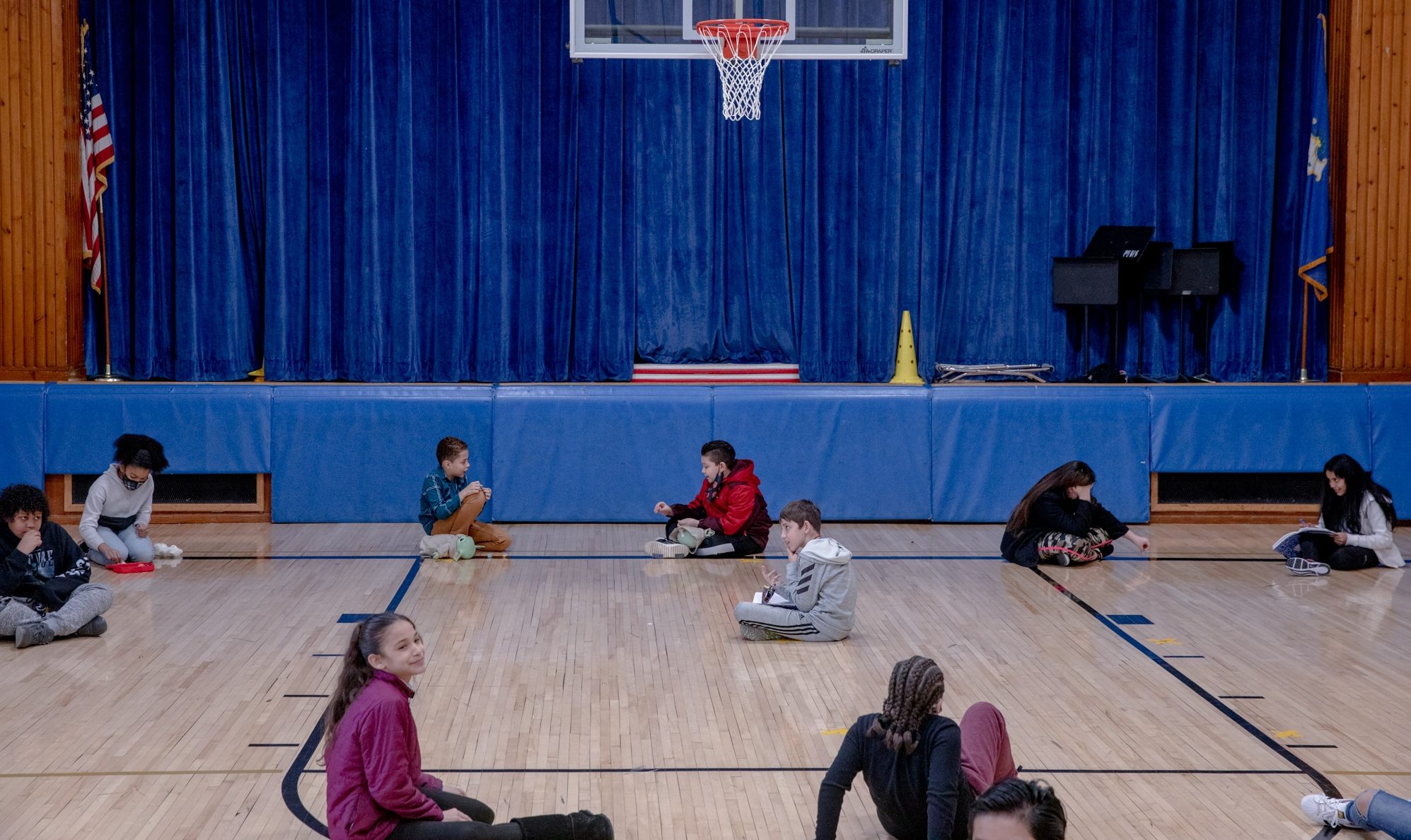A Better Way To Help Keep Connecticut Children And Their Communities Safe
[ad_1]
Yehyun Kim :: ctmirror.org
Students take a mask break as they sit six feet apart in a gymnasium at Roger Sherman Primary School in Meriden. When it’s not too cold, the students go outside for a mask break.
This school year quickly turned out to be unlike any we’ve ever seen before. We have seen an increase in discomfort, anxiety, temper tantrums and more mental health issues among students of all ages.

David johnson
Desires to “catch up†academically or to “get things in order†quickly may be understandable, but they fall short of normal in the classroom. Instead, it’s a recipe for higher stress and friction in classrooms and our communities. Simply put, this desire exacerbates the long-standing mental health crisis in our schools and communities.
Long before the pandemic, daily experiences in a child’s home and neighborhood such as neglect, abuse, substance abuse, financial stress, violence, medical crises, divorce, and the death of loved ones lead to states of toxic stress which, over time, affects a child’s ability. to think, behave and relate to others effectively. Too many of our students come to school every day with a backpack full of fear, shame, rage and loss. These students are often easily triggered and can escalate into disruptive behaviors that take time and energy to resolve.
Our heads of state must act now. Schools and families need and deserve access to health care. Children should also know that there are caring, supportive and attentive adults in the school. Emergencies should not be the first line of treatment. Our teachers need skills to show them how to effectively create a safe learning environment that addresses and honors the lived experiences of students.
Allowing students to share their fears and concerns is a big step in helping them build psychological immunity. This type of stress intervention can be accomplished by providing simple but school-wide support systems throughout the school day for all children – not just a few. By creating a safe space that allows teachers and students to engage in conversations, students can take the load off by sharing their opinions, feelings, thoughts and personal experiences.
When preventative programs are in place, teachers and school leaders begin to change their perception of behavior so that they do not solve a problem or implement more disciplinary measures, but honor it, treat and help children develop lifelong skills.
Schools that implement open prevention programs can develop long-term systemic changes that not only impact teachers and students in the classroom, but create a floating network within the school, families and communities. the community.
By creating these safe spaces that allow teachers and children to enter into these difficult conversations, teachers act as a social buffer for students and bear witness to their traumas. This is a transformational journey and real changes can happen along the way. The health of our children and our community is at stake.
David Read Johnson, Ph.D., is a licensed clinical psychologist in Connecticut and is the CEO of Miss Kendra Programs.
CTViewpoints welcomes rebuttals or opposing views to this and all of its comments. Read our guidelines and submit your comments here.
[ad_2]


Comments are closed.